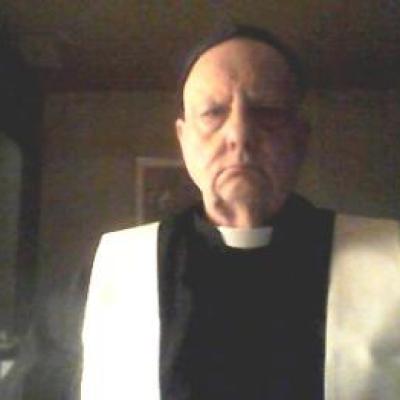


December 14, 2017 By Ashley Osmera 17 Comments
Walk into any Catholic Church, and it’s impossible to miss seeing candles.
There are candles on the altar, a special candle near the tabernacle, and candles in front of images or statues of the Sacred Heart, Our Lady, St. Joseph, or various other patron saints.
And these examples are just the bare minimum!
Go to a baptism, and there will be a huge decorated candle as well as candles for the godparents to hold.
Attend an Easter Vigil, and there will be the same large candle, small candles for the whole congregation, and a small bonfire will be lit outside the church preceding the Mass.

Then of course there are Advent candles … the blessing of throats with candles on the feast of St. Blaise … altar servers holding extra candles during the proclamation of the Gospel at Mass … and the list goes on.
Why in the world do Catholics use so many candles?
The word “candle” comes from the Latin verb candeo meaning “to shine, glow, or burn.” As early as the eighth century, the word “candle” was introduced into the English language specifically in relation to liturgical practices.
Throughout Church history, the candle has represented Christ: the perfect candle, THE Light of the World. The first book of John gives a poetic description of this reality:
“What has come into being in [Christ] was life, life that was the light of men;
and light shines in darkness, and darkness could not overpower it…
[John] came as a witness, to bear witness to the light, so that everyone might believe through him.
He was not the light, he was to bear witness to the light.
The Word was the real light that gives light to everyone; he was coming into the world.” (Jn. 1: 4-9)
Traditionally, liturgical candles are made of beeswax, and this is no accident or coincidence. The worker bees who gather the pure nectar of flowers don’t participate in the reproduction of the species. They are solely responsible for gathering the nectar and feeding the baby bees. Reproduction is left to the queen bee and drone bees.
Because virgin worker bees dedicate their lives to the creation of the wax and the nourishment of the hive, these bees have come to represent Our Lady, the Virgin mother who gave birth to the pure flesh of Christ, with Christ’s pure flesh being symbolized by the pure beeswax. What a detailed, beautiful symbol of this reality!
Besides the general significance of candles, there are particular reasons why different candles are used for different parts of the liturgy.
The unique Easter candle is easy to recognize because of its size: it is several feet tall and decorated with colorful designs. It is also imprinted with the year and a cross with five cloves.

Getty Images
In the Gospel of Luke, Jesus tells us to have our lamps lit, and to “be like people waiting for their master to return from the wedding feast, ready to open the door as soon as he comes and knocks. Blessed those servants whom the master finds awake when he comes.” (Lk 12:35-37)
This idea served as one of the inspirations for the Easter Candle. On Holy Saturday, we wait with expectation for the rising of Christ from the darkness of the tomb to the light of the Resurrection.
During the Easter Vigil Mass, the congregation lights their small candles from the Paschal Candle, as a reminder to share and reflect the light of Christ in their own lives. In another part of the vigil liturgy, the new Paschal Candle is used to bless the water of the baptismal font. The priest plunges the candle into the water three times, while exclaiming, “May the power of the Holy Spirit come down into the fullness of this fountain.”
This same Paschal candle is then lit during baptisms throughout the year as a reminder that the Sacrament of Baptism, where we first receive the Holy Spirit, is possible because of Christ’s sacrifice on the cross and His resurrection. He brings the light of life and grace into the darkness of sin and death.
When a baptism occurs during the Easter Vigil, the celebrant proclaims to the newly baptized:
“You have been enlightened by Christ. Walk always as children of the light and keep the flame of faith alive in your hearts. When the Lord comes, may you go out to meet Him with all the saints in the heavenly kingdom.”
The imagery of the candle and its light beautifully show how a new soul—a new apostle of light—joins God’s family.

The use of candles on the altar appears to have begun before the 12th century. While the main use of candles has already been established (to remind us of Christ as the light of the world) altar candles also bring to mind the reality that many of the persecuted Christians in the first centuries celebrated Mass secretly at night or in the catacombs, with the only light being candlelight. The fortitude and perseverance of those Christians helped the Faith survive and thrive even into the 21st century.
Candles may also be used in the entrance and recessional processions of the Mass, and be carried to where the Gospel is read, as a sign of triumphant joy in the presence of the words of Christ.
Candles are actually so important to the proper dignity and celebration of the Mass that it is normally deemed a grievous offense to celebrate Mass without any candlelight.